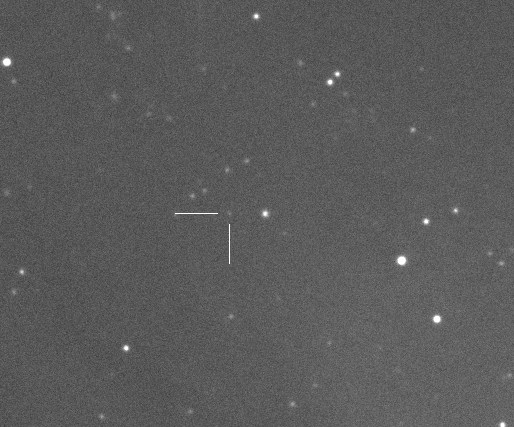11th December
In several of my images of M31 I have noticed two faint objects.
They do not look like normal novae, and the apparent brightness varies,
most possibly due to sky conditions. They could be variable stars, but my 20cm scope
is not really up to imaging individual stars in M31 unless they are particularly bright.
I have searched catalogues but so far have not been able to identify them.
This shows the objects with their coordinates, and the searches of the area using SIMBAD.
As can be seen, SIMBAD has nothing at those locations.
This shows my reference image of August 26th 2017 and one from December 11th:
This animation shows the area imaged by the 8 meter Subaru scope.
It shows nothing at those locations.
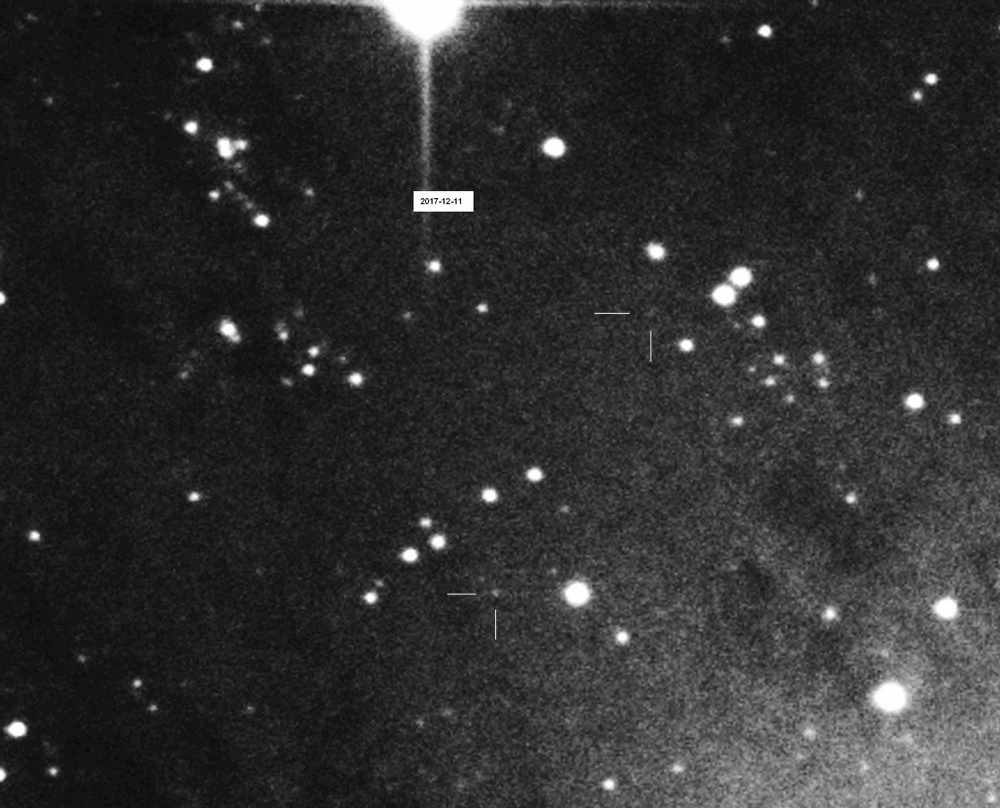
15th December
The two mystery objects are most noticeable tonight:
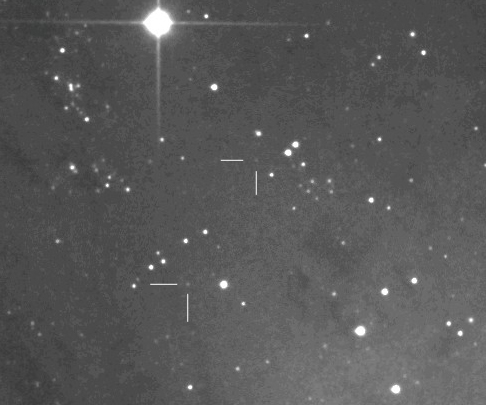
There is a recurrent nova in M31 which has made regular appearances since its discovery in December 2008.
The nova has the designation M31N 2008-12a.
This nova is due for a comeback. It is outside my normal field of view so I took several images further North.
A transient object was easily spotted, but it was in a different location.
A quick check showed it to be M31N 2017-09a.
(Update. ATEL 11070 announced that this nova has indeed undergone a re-brightening)
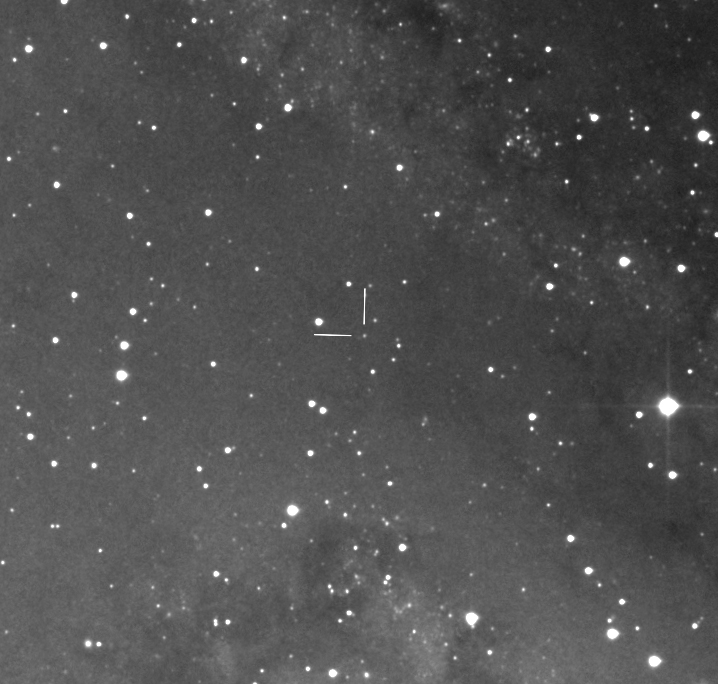
This shows where 2008-12a will appear:
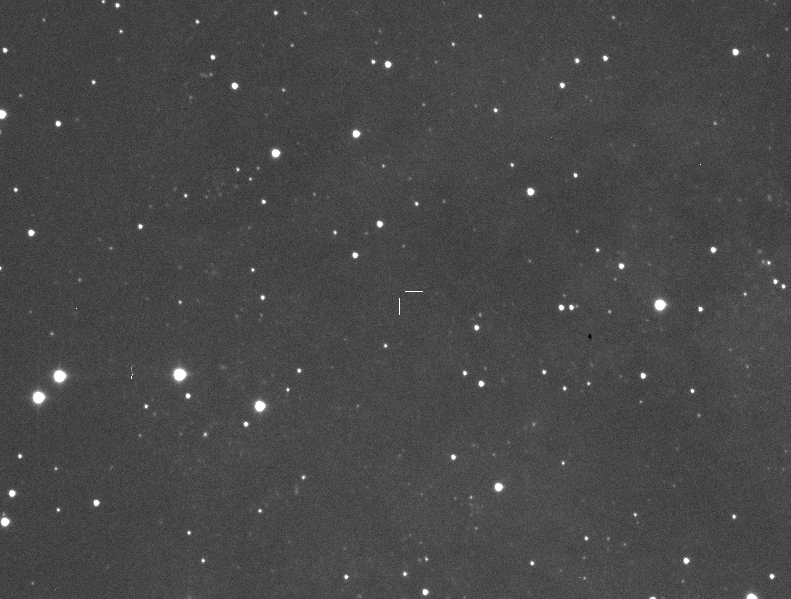
16th December
Although the two 'mystery' objects are unlikely to be novae, I posted announcements on TNS.
If they turn into interesting objects it will be nice to be credited with the discovery.
Lower of the two objects - announcement here.
Upper object - here.
David Bishop's extragalactic novae page.
27th December
The 'mystery' object AT 2017ixr has undergone a considerable brightening.
Whereas before it was only just noticeable over the background noise, it is now distinct.
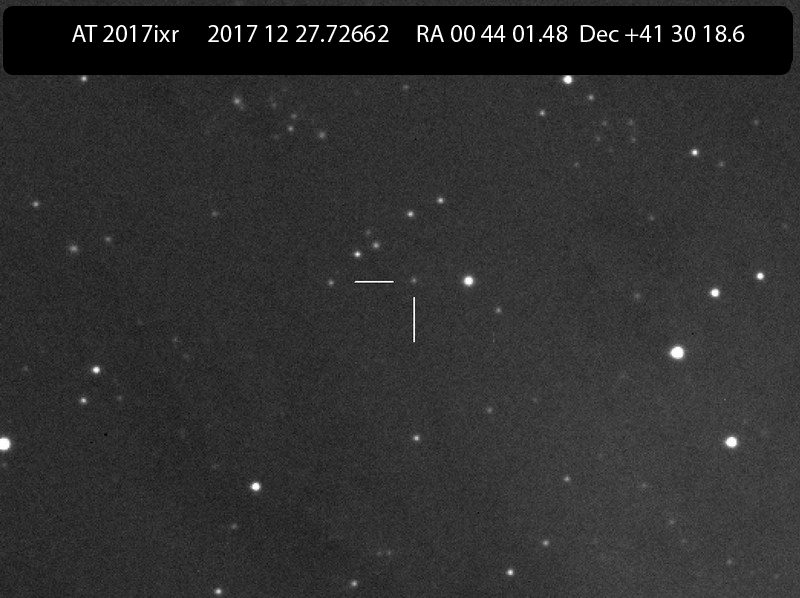
I alerted a few people and Kamil Hornoch passed the message to Steve Williams who took a spectrum very promptly using the 2 metre Liverpool telescope.The results came through soon after:
"looks inconclusive. All we really have is narrow H-alpha emission on a relatively blue continuum. Spectrum-wise it could be an LBV, but I've looked at the Massey survey and there is nothing at all in there, so that's unlikely.
Therefore I think the most likely explanation is a slow rising nova. If it is a nova, from the spectrum I would say there is a good chance it is still before peak, so it would be worth keeping an eye on over the coming days."
Rather disappointing that it is not yet declared a nova, but exciting that a professional observatory investigated my object.
The subtraction technique showed the object very clearly. Note that the upper object, AT 2017 ixs is very faint, but still there.
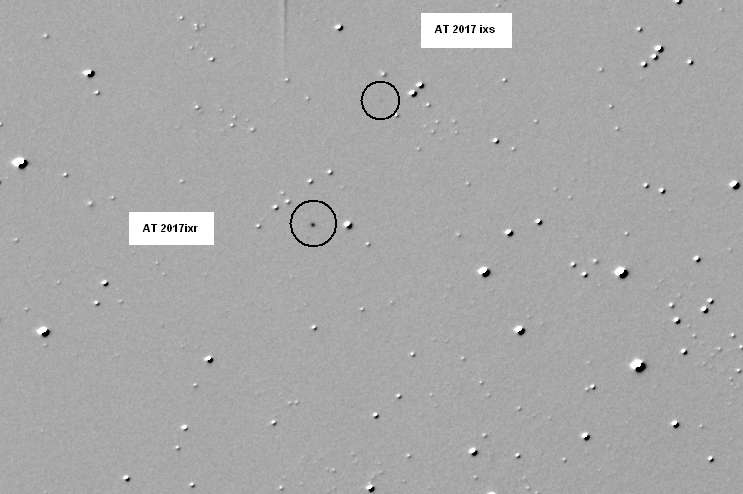
28th December
I went back over previous images to attempt a lightcurve of AT2017ixr.
In all but the recent image the object was near the limit of detection, so magnitudes 19-21 are very error prone.
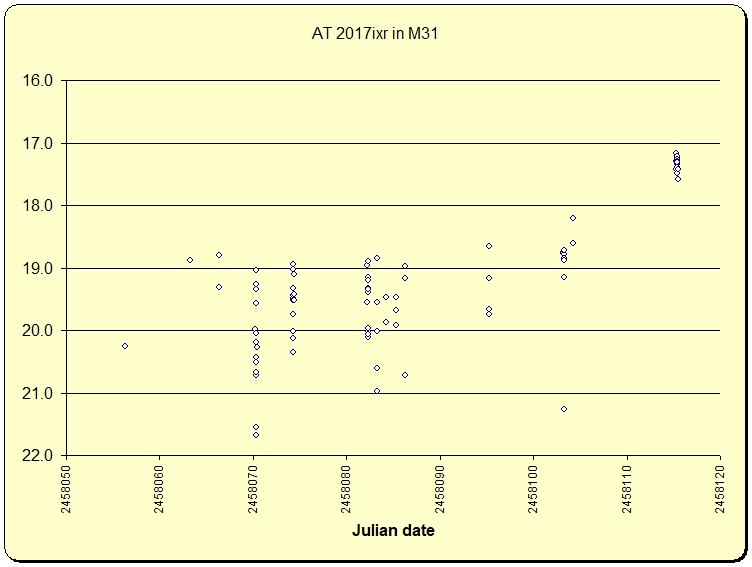
29th December
Further brightening of AT2017ixr not seen. In fact it is dimmer.
